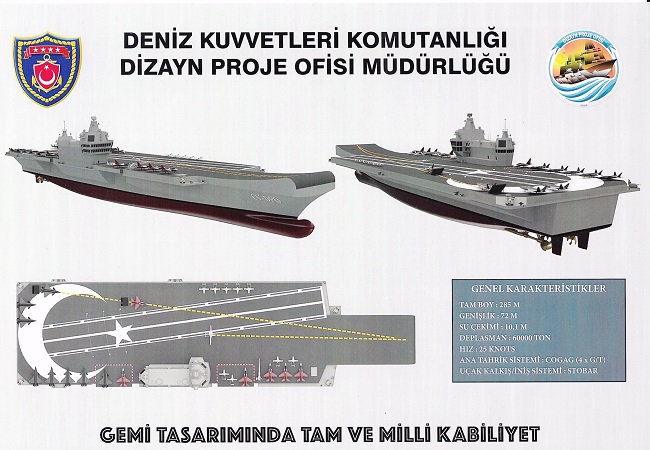
Confirming what was anticipated a couple of months ago, a visit by the local press to the Turkish Navy Arsenal in Istanbul, which took place on 24 April 2024, has allowed to acquire further interesting information on the future aircraft carrier of the Turk Deniz Kuvvetleri will - or could - look like. Whithin the arsenal, a dedicated Project Office is working on future Turkish naval units and, on the occasion of the media trip, showed some interesting infographics. The first information on the future aircraft carrier was disseminated last February, during President Erdogan's visit to the aforementioned Office. At the time, it was assumed that the new vessel was a suitably enlarged and modified reproduction of the ANADOLU aircraft carrier, i.e. characterised by a floodable dock and also subject to a collaboration between Turkish public and private entities and Navantia. Subsequent indiscretions belied these initial suppositions, and the visit on 24 April gave rise to several confirmations and various novelties, first and foremost the total management of the enterprise by the Turkish naval and systems industry. This is an indication of the growing confidence placed in national production capabilities. As reiterated by the commander of the Istanbul Arsenal, the new vessel will be a 'pure' aircraft carrier, with a hull length of 285 m, a maximum width of 72 m, a displacement of about 60,000 t, and a draught of more than 10 m. The main feature is the presence of the angled deck and ski-jump, the latter extending about 40 m in width and of a modular type, i.e. detachable and replaceable so as to obtain a totally 'flat' flight deck from bow to stern. However equipped with a ski-jump in its initial configuration, the future Turkish aircraft carrier is therefore categorised as a STOBAR (Short Take-Off But Arrested Recovery) carrier, i.e. short take-off but with ski-jump and traditional landing, with arresting cables. Nonetheles, the modularity of the ski-jump indicates the Turkish Navy's intention to procure aircraft with advanced performance, 'forced' to use catapults, probably electromagnetic, for take-off, an arrangement for which long-term development is in any case envisaged. Hence, 3 arresting cables are present, at the beginning of the flight deck, at an angle of about 13° with respect to the longitudinal axis of the ship. The shape of the flight deck seen from above is similar to 2 rectangles placed side by side in length, of which the forward one coincides with the ski-jump. If confirmed, it is probable that this configuration was adopted in order to limit the maximum width of the unit, because a greater angle of the section of the flight deck dedicated to ballasting would have resulted in a maximum width of over 72 m, probably excessive for the size of floating docks available in Turkey.








.png)
